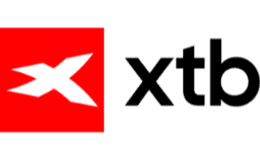
Fractional shares
Get dividend payments
Interested in investing and heard of the Nasdaq? You’re in the right place. This article unpacks the Nasdaq stock exchange, a key player in the world of investing. We’ll delve into how you can put your money to work in the Nasdaq, the types of companies listed on this exchange and even touch on the downsides like the implications of currency risk for UK investors.



Our experts keep on top of the markets to bring you the latest on what's shaking up stock prices.
3 December 2024: The Nasdaq 100 has hit a new all-time-high of around 21,165 points after a strong few weeks and solid earnings season for tech stocks.
The Nasdaq is an American stock exchange based in New York City. It’s the second-largest stock exchange in the world after the one that shares its home city, the New York Stock Exchange NYSE). Nasdaq was initially an acronym for the National Association of Securities Dealers Automated Quotations. Catchy, we know. The Nasdaq is very technology-heavy, being the home to all of the best tech stocks you know and love like Amazon, Apple, Nvidia and plenty more.
Yes, you can invest in Nasdaq from the UK in several ways. These days, many of the best trading platforms and brokers offer access to US stock markets. You can buy individual stocks listed on Nasdaq, or invest in index or tracker funds that mirror the performance of the whole Nasdaq composite, for example.
According to the Nasdaq website, the exchange is “widely considered to be the exchange of choice for innovative companies in technology”, plus other sectors that play a big role in driving US economic growth.
So, if you want to invest in innovative firms with the potential for higher returns, the Nasdaq is worth a look. For UK investors, putting money into US companies as well as UK investments is also a way of diversifying your investment portfolio – an approach that can help manage risk by spreading assets across multiple markets.
There are 2 main ways to invest in the Nasdaq:
More than 3,500 stocks are available on the Nasdaq, including many of the largest companies in the world by market capitalisation.
Popular Nasdaq stocks include:
Some brokers or trading platforms will charge you a commission on every trade, while others may only charge you a foreign exchange fee when you initially deposit pounds and then charge no commission on trades.
It’s important that you understand the fee structure of each platform before using it to trade. Certain brokers or platforms will suit different types of investors but may be expensive if you only invest small amounts.
Below is a breakdown of the basic fees you’ll pay when making a single Nasdaq trade using each broker, as well as the foreign exchange fees involved.
| Platform | Fee for a US trade | Foreign exchange fee |
|---|---|---|
| eToro | £0 | 0.75% |
| Hargreaves Lansdown | £11.95 | 1% |
| Freetrade | £0 | 0.99% |
| Trading 212 | £0 | 0.15% |
| IG | £10 | 0.5% |
As a UK-based investor, when you put your money into US-based Nasdaq stocks, you’re not only dealing with the ups and downs of the stocks but also the fluctuations in the currency exchange rate. This is known as currency risk. Here’s how it works: if you invest when the dollar is strong compared to the pound, but then the pound strengthens, the value of your investment, when converted back into pounds, could actually decrease, even if the Nasdaq performed well.
This is where “hedged” funds come into play. These are special versions of funds that use financial tools to try and cancel out the impact of currency fluctuations. Essentially, they aim to provide you with the returns of the Nasdaq in your local currency, reducing the potential losses (or gains) from currency movements. This way, you get to invest in the Nasdaq but with less worry about the pound-dollar dance. Think of it like a financial cushion that absorbs the bumpy ride of currency movements, helping ensure a smoother investment journey.
If you want to invest in Nasdaq but don’t want to buy Nasdaq stock directly, you have other options. For example, you can buy an ETF that tracks the performance of the entire Nasdaq index, as well as indices such as the S&P 500 or Dow Jones Industrial Average.
Dozens of ETFs and index tracker funds give you exposure to certain Nasdaq stocks. Many of these can be bought from the UK. Most popular UK trading platforms and brokers will offer at least one Nasdaq index tracker fund. Some of the most popular Nasdaq 100 tracker funds include:

"Many of the best global technology stocks are listed on the Nasdaq, and investing in a fund that copies an index like the Nasdaq 100 is an excellent way to invest in many of the top US tech stocks.
Past performance for this index (due in large part to tech stocks) has made it one of the best-performing investments around over recent decades. Past performance doesn’t dictate future results and this stellar growth may continue, but it may not. One thing that’s worth highlighting is that just because a stock is listed on the Nasdaq exchange, it doesn’t automatically make it a great investment.
If you like the idea of investing in top US stocks through a fund or ETF, why limit yourself only to stocks on the Nasdaq? If you were to invest in a fund that tracks an index like the S&P 500, you can get exposure to the top stocks from the Nasdaq and also those listed on the New York Stock Exchange. You can find excellent companies on both exchanges so you might want to explore a more diverse approach than throwing all your eggs in a tech basket from a single exchange."
To give you an idea of potential returns of investing in the Nasdaq, below we’ve shown the 1-, 3- and 5-year price returns of the Nasdaq Composite index, starting from 2016. Price returns are directly linked to the index value.
This shows the importance of investing for the long term and not panic-selling when the value of investments drops. While the Nasdaq may take a while to recover, history tells us that most stock markets bounce back from downturns eventually. After all, even after a substantial drop, the August 2023 value of the Nasdaq is still substantially higher than it was 5 years previously.
| Year | Index value* | 1-year return | 3-year return | 5-year return |
|---|---|---|---|---|
| 2021 | 15644.97 | 21.4% | 137.6% | 161.5% |
| 2020 | 12888.28 | 43.1% | 86.7% | 157.4% |
| 2019 | 9006.62 | 36.8% | 50.5% | 89.3% |
| 2018 | 6584.52 | -4.6% | 31.5% | 58.4% |
| 2017 | 6903.39 | 15.4% | 45.1% | 133.2% |
| 2016 | 5983.12 | 19.5% | 43.9% | 129.7% |
*At the end of the year
The Nasdaq Composite (COMP) is a stock market index that tracks the common stocks and securities on the Nasdaq. The Nasdaq-100 index tracks a subset of the top 100 non-financial stocks on the Nasdaq. You can invest in these indices by buying an ETF that specifically tracks the performance of the stocks in the index.
To make comparing even easier we came up with the Finder Score. Costs, features, ease and range of investments across 30+ platforms are all weighted and scaled to produce a score out of 10. The higher the score the better the platform – simple.
Read the full methodologyAll investing should be regarded as longer term. The value of your investments can go up and down, and you may get back less than you invest. Past performance is no guarantee of future results. If you’re not sure which investments are right for you, please seek out a financial adviser. Capital at risk.
The Nasdaq, home to some of the world’s largest tech stocks, is a compelling stock exchange for investors to look into. You can either pick individual stocks listed on this exchange or invest in ETFs or funds that mimic its overall performance. Before diving in, choose a platform that supports trading US stocks or has a solid selection of funds, and remember to account for any extra foreign exchange (FX) fees.
There’s no denying that the Nasdaq has a heavy tech focus, with the majority of its holdings hailing from this sector. Conversely, the S&P 500 – an index tracking 500 large US companies – offers a broader sector mix. Consider your sector preference when choosing an index, think about your goals and risk appetite. Remember, diversification is a key method to help minimise risk.
Find out the key differences between the NASDAQ and the NYSE.
Find out more about the London Stock Exchange, what companies are listed on it and how to invest in the largest exchange in Europe.
Find out what the Toronto Stock Exchange is, what companies are on it and how you can buy shares on Canada’s largest exchange.
Find out about the Euronext stock exchange, how it works, some companies listed on it and how to invest in Euronext ETFs and shares
Find the cheapest and easiest ways to invest in Asia’s oldest stock exchange.
Find out the cheapest way to buy shares on Asia’s largest stock exchange.
Here are the cheapest and easiest ways to invest in the world’s fourth-largest stock exchange.
Want to invest in the world’s largest stock exchange? Here’s how you can invest in stocks listed on the NYSE.